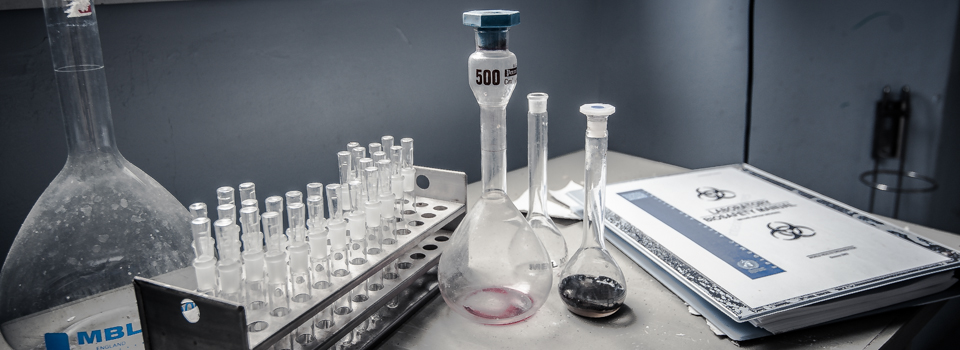As featured in the Daily Mail, click here to view the article.
There’s only one 4 o’clock I like to see in my day and it’s not the one in the morning. Unfortunately, on this occasion, I would be waking up at this ungodly hour to set off on another of those explores that I eyeballed some years ago when it was first nailed by those Pompey lads in 2010 (fair play to you)! In those days, it looked like the workers had just left for the day, everything remained. 3 years later and it’s comparatively bare looking although some nice parts still remain. After spending a good couple of years seeing pretty much zero urban explorer traffic, Haslar came back on the map. Security must have let their guard down and every Tom, Dick and Harry wanted a slice of the Haslar pie and it ended up a big time tourist route. I decided to let things die down again and bide my time.
Founded in the reign of King George I, the Royal Hospital Haslar in Gosport, Hampshire, was one of several hospitals serving the Portsmouth area, but had previously been the country’s foremost – and ultimately last – military hospital. Its military status was withdrawn in 2007, and those military personnel remaining joined the Ministry of Defence Hospital Unit (MDHU Portsmouth) at Queen Alexandra Hospital in Cosham, Portsmouth. In the summer of 2009, all remaining (civilian) medical services at Haslar were relocated to the Queen Alexandra Hospital, and the site was subsequently sold.
The Royal Military Hospital Haslar has had a number of notable specialist medical facilities, including a decompression chamber and a zymotic isolation ward.
The Royal Hospital Haslar was designed by Theodore Jacobsen and built between 1746-61. The site opened as a Royal Navy hospital in 1753. It has had a very long and distinguished history in the medical care of service personnel both in peacetime and in war since that time, treating many tens of thousands of patients.
Haslar was the biggest hospital – and the largest brick building – in England when it was constructed. Dr James Lind (1716-1794), a leading physician at Haslar from 1758 till 1785, played a major part in discovering a cure for scurvy, not least through his pioneering use of a double blind methodology with Vitamin C supplements (limes). The hospital included an asylum for sailors with psychiatric disorders, and an early superintending psychiatrist was the phrenologist, Dr James Scott (1785–1859), a member of the influential Edinburgh PhrenologicalSociety.
In 1902 the hospital became known as the Royal Naval Hospital Haslar (abbreviated to RNH Haslar).
In the 1940s, RNH Haslar set up the country’s first blood bank to treat wounded soldiers from the Second World War.
In 1966, the remit of the hospital expanded to serve all three services – the Royal Navy, Army and Royal Air Force, after which time, it became known as the Royal Military Hospital Haslar.
In 1996 the hospital again became known as the Royal Hospital Haslar.
In 2001, the provision of acute healthcare within Royal Hospital Haslar was transferred from the Defence Secondary Care Agency to the NHS Trust. The Royal Hospital was the last MOD-owned acute hospital in the UK. The decision to end the provision of bespoke hospital care for Service personnel was taken prior to the UK’s expeditionary campaigns in Iraq and Afghanistan, but was nevertheless followed through, largely on the grounds of cost. The change from military control to the NHS, and the complete closure of the hospital have remained the subject of considerable local controversy.
The hospital formally closed in 2009 with a view to it being redeveloped in some shape or form in the future. Development of the site was imminent so it was time to put words into action.
I left the comfort of by bed, delirious from the depravity of missing sleep. I stepped outside, it’s September and whilst the days are still Summery, the nights bring back the reality that Winter is just around the corner. Nobby and I arrived at Haslar with the first glimmer of sunlight starting to break the horizon. We wanted to make our entrance under the cover of darkness, some parts of the site are very open and security patrols are regular. The guards here aren’t stupid, they know we’re coming, they try a variety of hide and seek tactics to try and outsmart us. This place is an absolute fortress, it will probably go down as one of the hardest places I’ve found a way into. We tried every trick in the book including some impressive displays of vertical agility which lead us to a way in. We celebrated silently but celebrations were short-lived, we’d made our way into a detached auxiliary building with little interest. Back to the drawing board. Metaphorically speaking, a chain is only as strong as it’s weakest link and out of the vast number of links in this chain, we managed to find the weak one, just at the point we were about to give up. It was like playing the Krypton Factor, the puzzle was solved and we were in!
We spent the next few hours wandering the vast array of corridors, wards and treatment rooms photographing anything interesting that remained. Comparing earlier reports from Haslar, a lot had changed. Most things had been cleared out but bizarrely, all manner of X-ray machines, CT and MRI scanners remained. Now hot, tired and fatigued, it was nearing lunch time, the food they serve here is shit so we planned our exit. We nearly had an encounter with a gardner/groundsman but some ducking and diving saw us back onto the streets of Gosport heading back for the car and my motorway services sarnies!






























